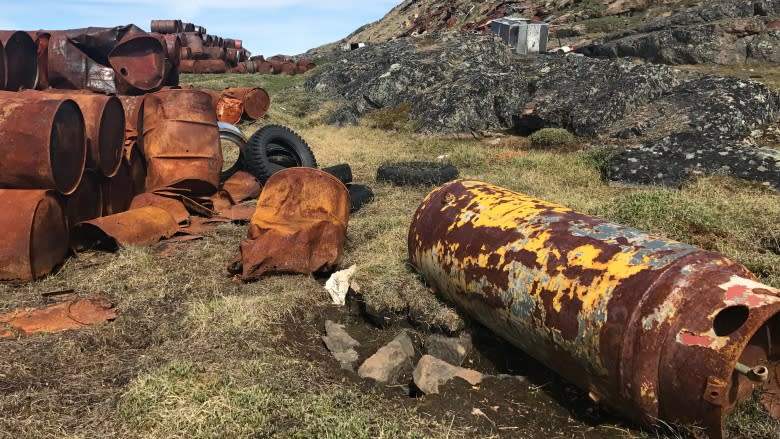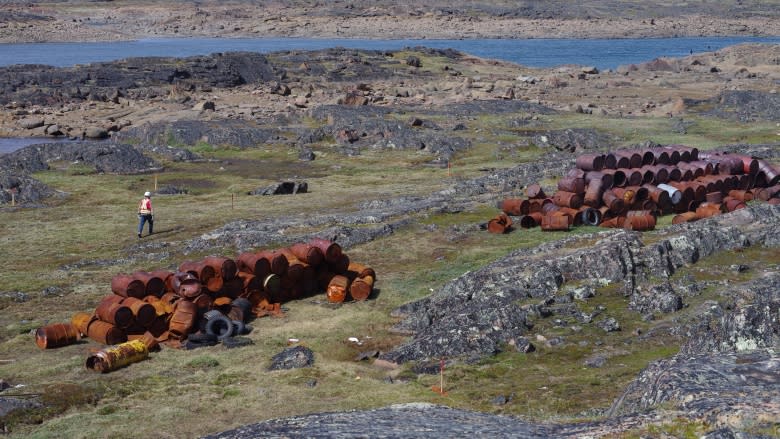Hazardous material from 1960s finally getting cleaned up near Sylvia Grinnell park in Iqaluit
The rusted-out fuel drums, car frames and old appliances that litter the tundra on the edge of Sylvia Grinnell Territorial Park in Iqaluit will soon be cleaned up.
This month, Transport Canada, which used to own the site, awarded an approximately $5.5 million contract to Iqaluit's Kudlik Construction to remove hazardous waste and bury remaining debris.
In preparation for the project, Transport Canada determined some of the soil, surface water and sediment in the area was contaminated with petroleum hydrocarbons, pesticides, asbestos and PCBs (polychlorinated biphenyls).
Contaminated soil and debris will be flown south for proper disposal, while the rest will be compacted in an on-site landfill that will be covered over and monitored.
Most of the junk was bulldozed off a cliff near the mouth of the Sylvia Grinnell river in 1963 when the U.S. military left what was then known as Frobisher Bay.
"The contamination that took place at the time was very consistent with the historical norms and the knowledge base of how we disposed of our materials during that period of time," said Claire Carriere, director for Transport Canada's prairie and Northern region.
Now, she says, Transport Canada is committed to cleaning it up. Work should begin on the site before the end of July, with the bulk of the removal completed before winter. Long term environmental monitoring will extend until 2020.
Iqaluit resident Franco Buscemi frequently uses the area to hunt, fish and gather water.
"It's an indication of some reconciliation happening. I think when governments came up here they didn't really intend on the North being part of the country," Buscemi said.
"All across the North, you can see it, with the DEW lines sites, all these locations were treated as disposable, there was no thinking about keeping the land pristine."
Transport Canada started assessing the site in the early 2000s but completed other more pressing remediation projects around the nearby Iqaluit airport before turning its full attention to the metal dump.
The department transferred the area around the Iqaluit airport to the territorial government in 1995.
"I know there was some reluctance before about who put the contamination there whether it was the American military or the Canadian government. I'm glad to finally see that the contaminants are going to be removed and there's going to be some remediation done," Buscemi said.
Hundreds of cubic metres of hazardous material will be removed.




